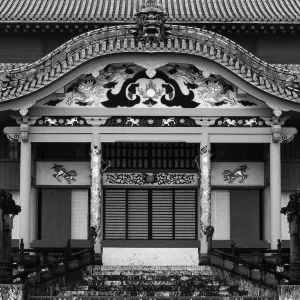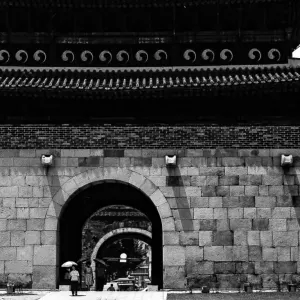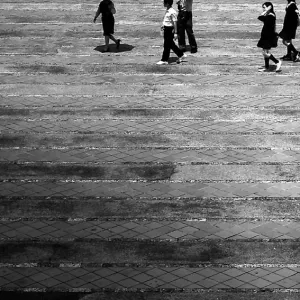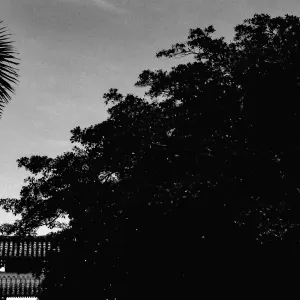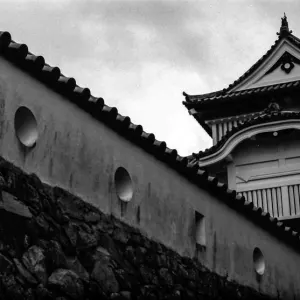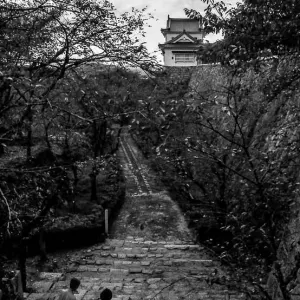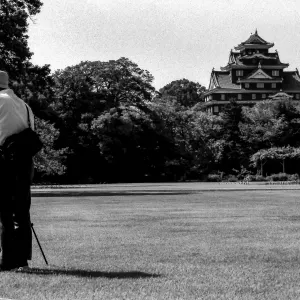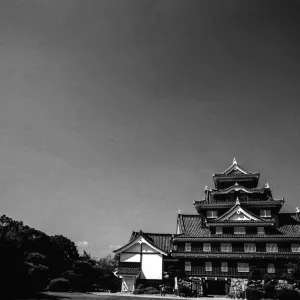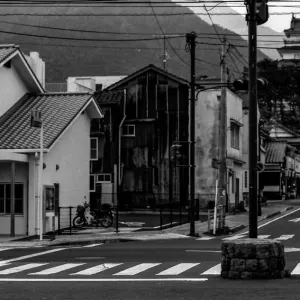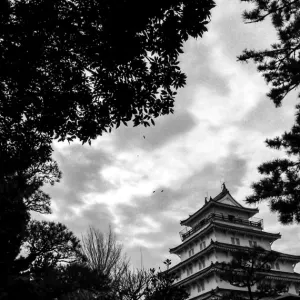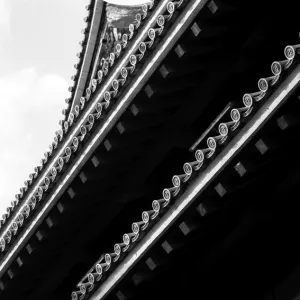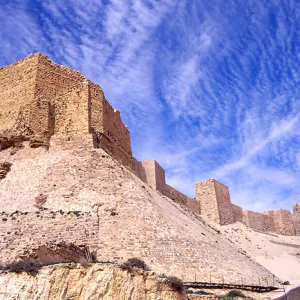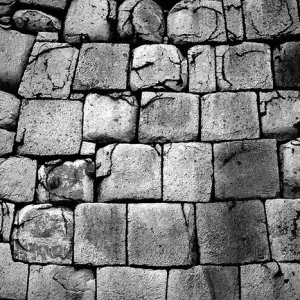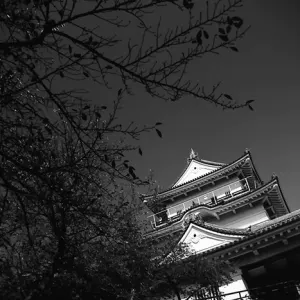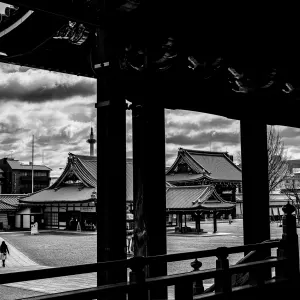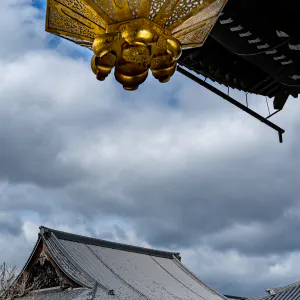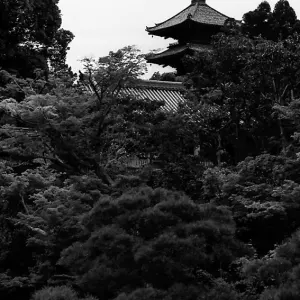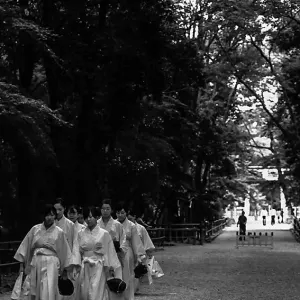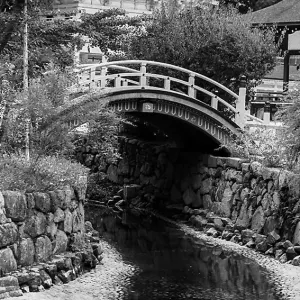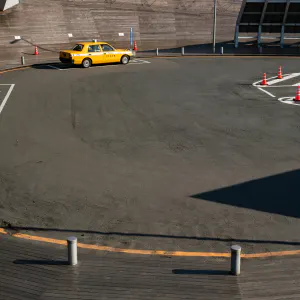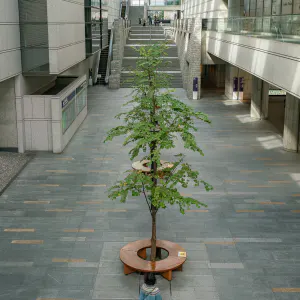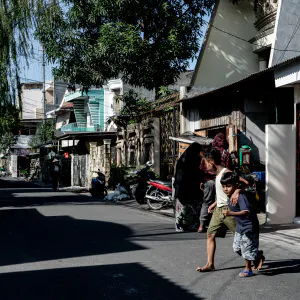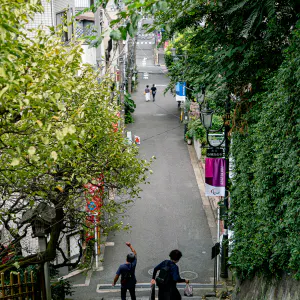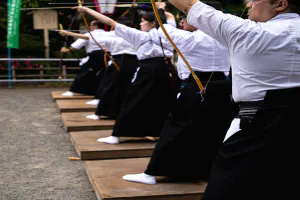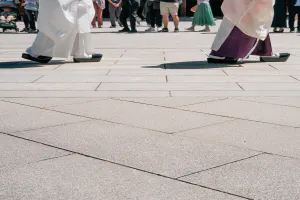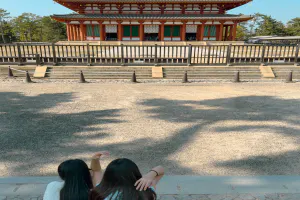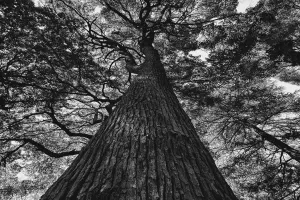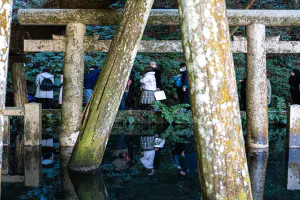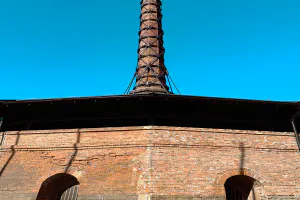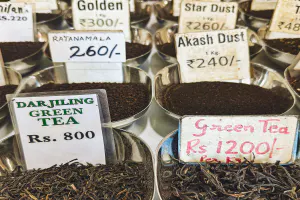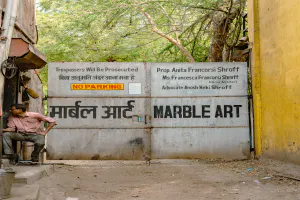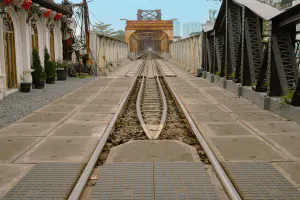The Ninomaru Palace, the site of the restoration of imperial rule, has a relaxed atmosphere when viewed from the outside
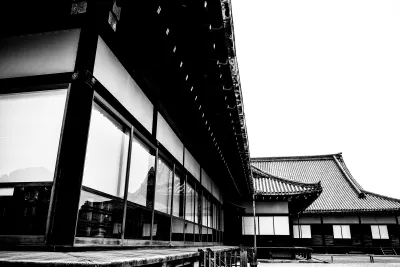
As soon as I passed through the Karamon gate of Nijo-jo Castle, the Ninomaru Palace was waiting for me. It was a complex building designated as a national treasure with six buildings in a row in a flying geese shape: the Tohsamurai, the Shikidai, the Oohiroma, the Sotetsu-no-ma, the Kuroshoin, and the Shiroshoin. The photo shows the Ninomaru Palace from the Ninomaru Garden side.
The name "Ninomaru" gives the impression that this building is not the most important in the castle. Generally speaking, the core of a castle in Japan is "Honmaru". However, this Ninomaru Palace was the site of a turning point in Japan's history. It is the place where the 15th shogun, Tokugawa Yoshinobu, presented his request to the Meiji Emperor on November 9, 1867. It was here, in the Kuroshoin of the Ninomaru Palace, that the so-called "restoration of imperial rule" took place.
I felt a little strange that such an important ceremony for the shogun to hand over power was held in Ninomaru and not in Honmaru, and when I looked it up, I found that the east side of the current Ninomaru Palace was originally the Honmaru. The current structure standing in the Honmaru site is a relocated version of the former Katsura-no-miya family residence, which was located to the north of the Imperial Palace, and was originally unrelated to the Nijo-jo Castle of the Tokugawa family.
| Apr 2021 ARCHITECTURE KYOTO | |
| CASTLE KYOTO CITY WORLD HERITAGE SITE |
PHOTO DATA
No
11879
Shooting Date
Feb 2020
Posted On
April 17, 2021
Modified On
August 24, 2023
Place
Nijo-jo, Kyoto
Genre
Architectural Photography
Camera
RICOH GR III
